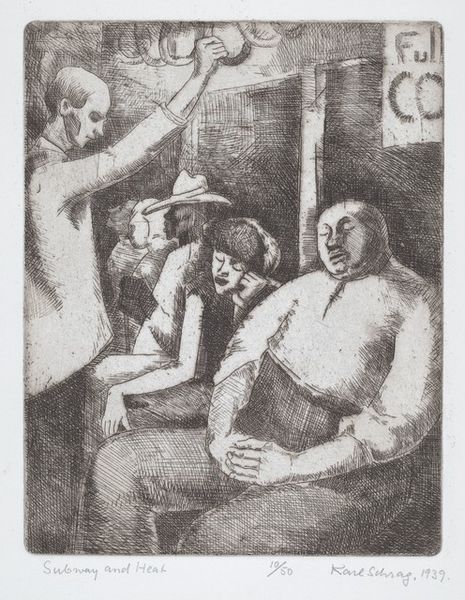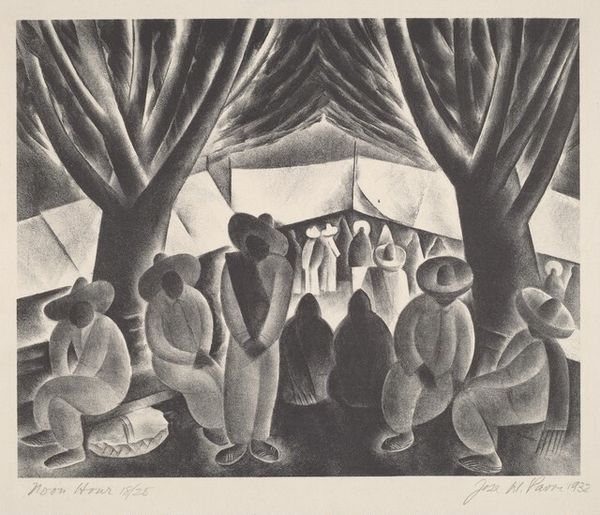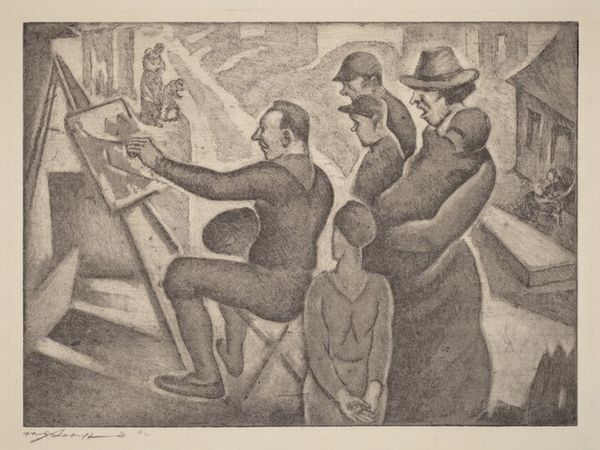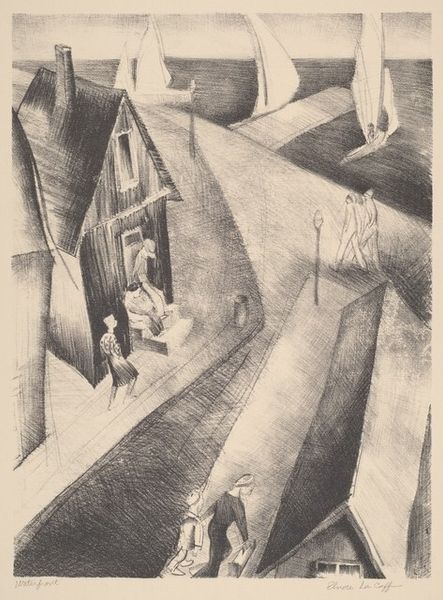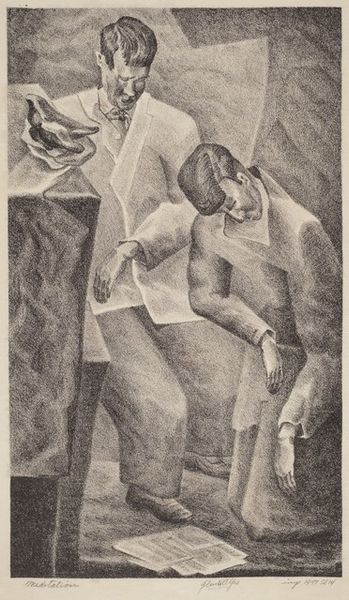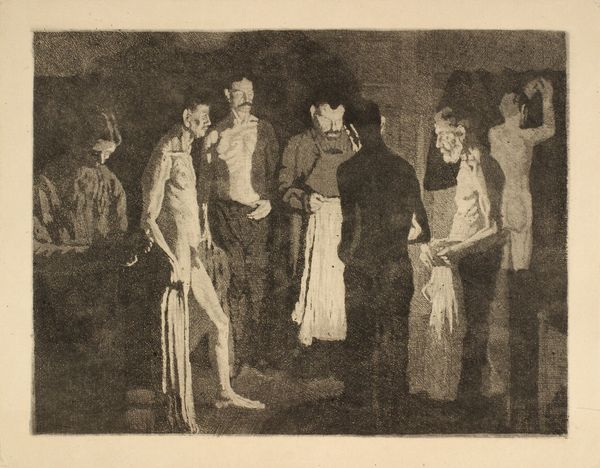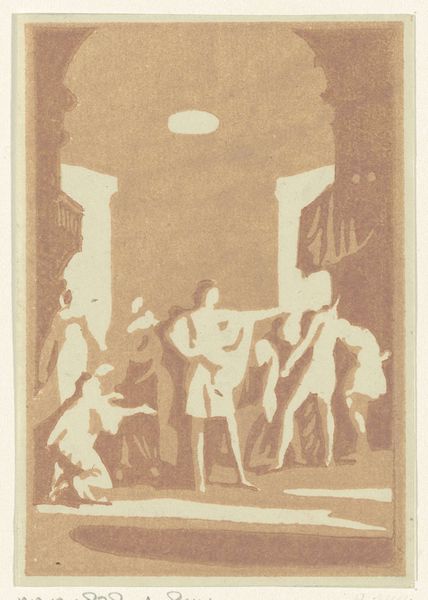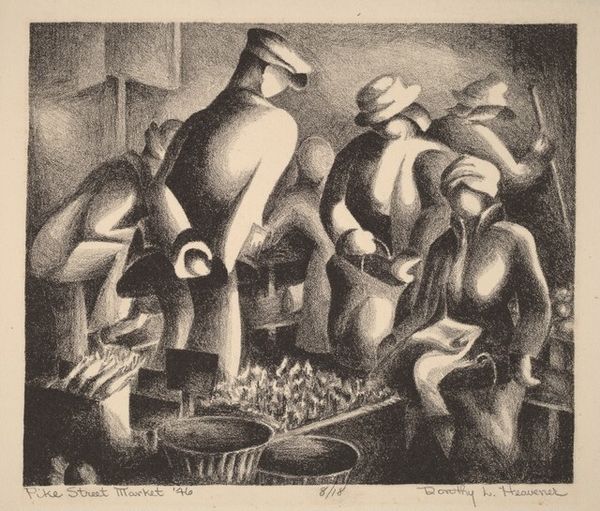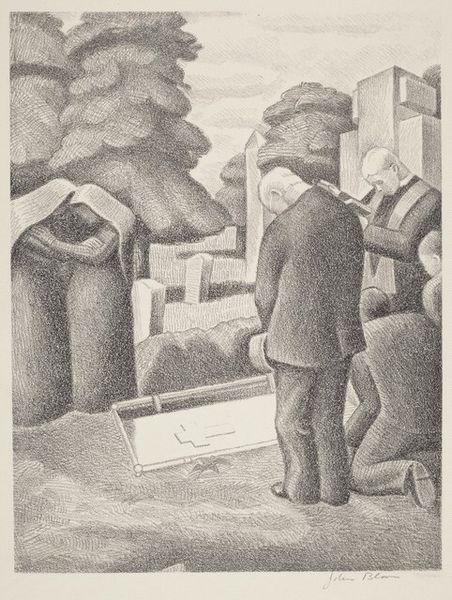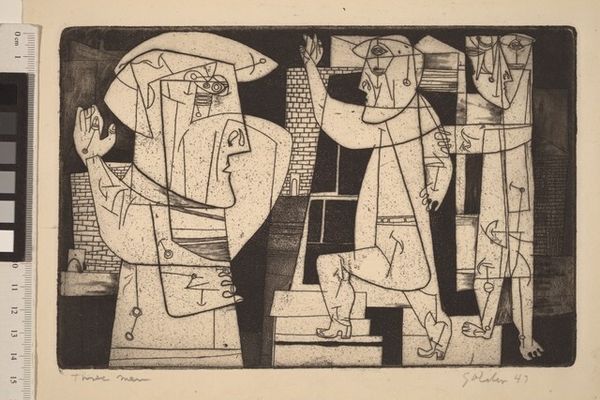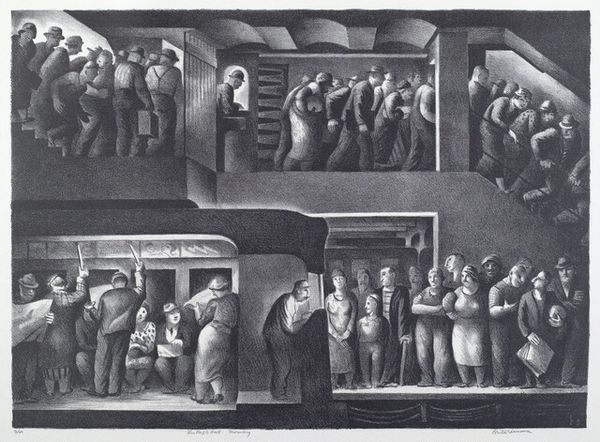
drawing, print, pencil
#
drawing
# print
#
landscape
#
figuration
#
pencil drawing
#
pencil
#
surrealism
#
mexican-muralism
#
cityscape
#
realism
Dimensions: Image: 275 x 355 mm Sheet: 403 x 560 mm
Copyright: National Gallery of Art: CC0 1.0
Stefan Hirsch made this lithograph, Street in Mexico, in 1932, using only black ink to create a full spectrum of values through a delicate process of hatching and mark-making. The tonal variations created by the lithographic crayon on stone are so soft, almost like a pencil drawing. Look at the ground: it's made of tiny, dense marks, a kind of vibrating energy. In contrast, the figures are delineated with clear outlines, which gives them a solidity, but also an isolation from their environment. It’s as if the crowd is a cut-out, pasted on a textured ground. The details on the figures’ outfits gives them a visual richness, but the somber tonality subdues this, giving the overall image a feeling of melancholy. I think Hirsch was onto something, something about the way the world just is: a combination of surfaces, textures, objects, people, all bumping up against each other. Like the work of Charles Sheeler, Hirsch creates a feeling of disquiet by subtly disorienting his subjects. But in the end, like all successful art, Street in Mexico creates a space for us to wander, to make our own connections, and to find our own meanings.
Comments
No comments
Be the first to comment and join the conversation on the ultimate creative platform.

